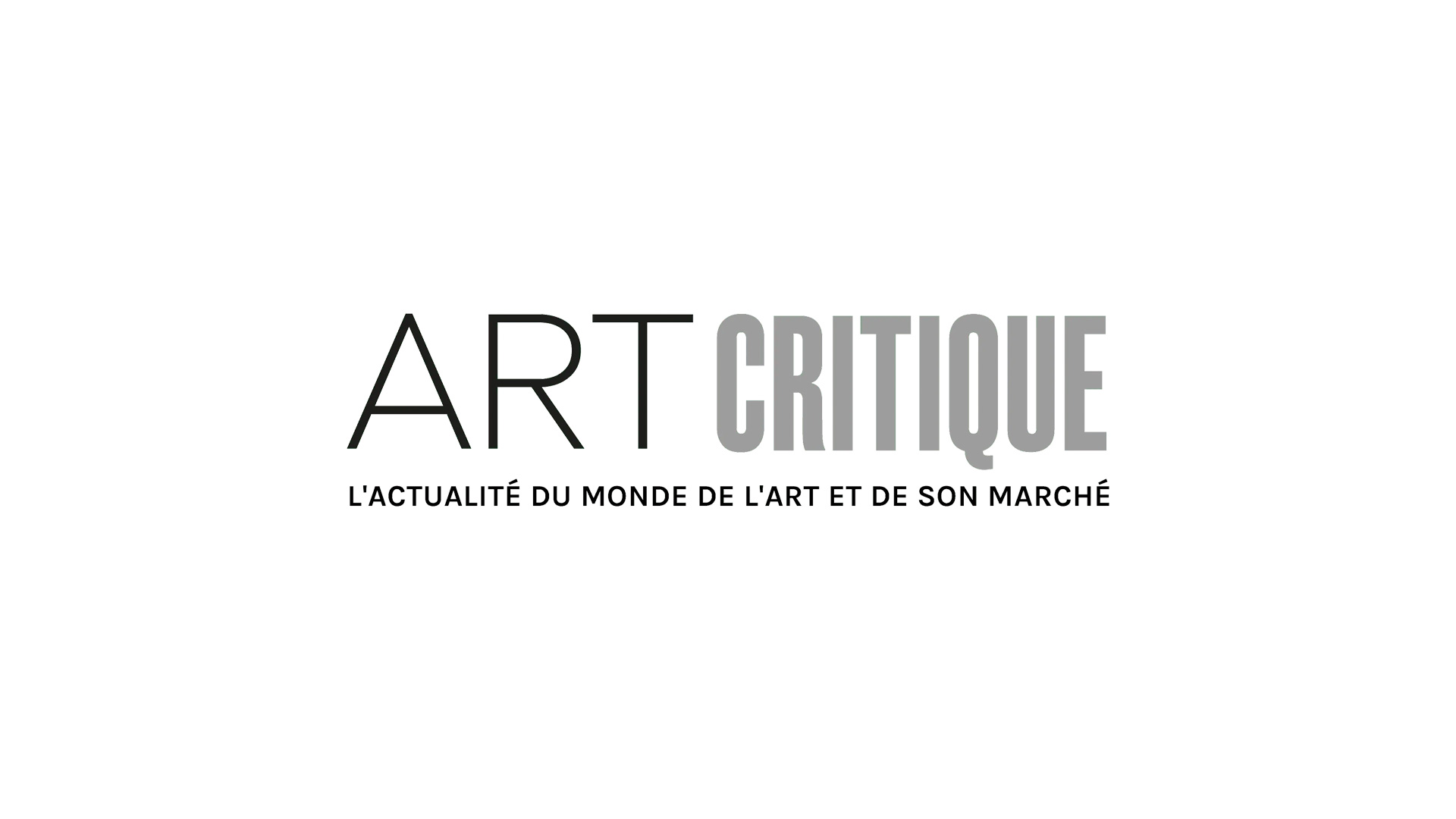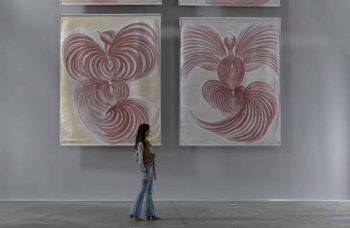The latest iteration of the site-specific art installation festival Desert X is currently underway in Al Ula, Saudi Arabia – but not without controversy. Normally associated with the barren wastelands of the Coachella Valley and Palm Springs in California, the festival relocated to the UNESCO World Heritage site in the Kingdom of Saudi Arabia this year for the first time, at the behest of Crown Prince Mohammed bin Salman (MBS) and to the general uproar of the art world.
The backlash is largely concerned with MBS’s abysmal human rights record and his country’s notoriously illiberal attitude towards both its own citizens, foreign entities and the arts in general. The decision to uproot Desert X has been met with derision by art critics and outrage by some of those most intimately involved with its organization, as no less than three board members resigned in protest. One of them, Los Angeles-based artist Edward Ruscha, was especially damning in his appraisal of the situation, claiming it was “like inviting Hitler to a tea party”.
While those behind the move have justified their decision with avowals of their intention to “open a dialogue” with one of the world’s most maligned nations, the actions of MBS have been predicated by plenty of autocratic leaders before him. From fascist Italy to latter-day Libya, using the arts as a means to whitewash the reputation of an unpopular government and brainwash its subjects into subordinance is a trick almost as old as the ancient ruins currently hosting Desert X.
A laundry list of malfeasance
MBS certainly has good reason to desire a PR makeover at the moment. Although technically only the Crown Prince to his father Salman’s King, MBS calls the shots by all accounts – and his ascension to the throne was less than a smooth one. After manifold dubious dealings, MBS’s final obstacle to his current position was his own 56-year-old cousin Mohammed bin Nayef. According to the New York Times, bin Nayef was held against his will and forced into abdicating his role, paving the way for MBS to step forward. Saudi officials, unsurprisingly, dismissed those reports as “Hollywood fantasy”.
In any case, MBS wasted little time in cementing his authority. In March 2018, less than a year after coming to power and at just 32 years of age, MBS orchestrated the mass detainment of an estimated 381 princes, businessmen and sundry billionaires, allegedly torturing them and forcing them to sign off vast swathes of wealth to the monarchy. The government have painted the incident as a successful clampdown on corruption and claim to have liberated $106 billion in stolen funds, but the lack of transparency surrounding the entire process makes those assertions extremely difficult to verify.
Meanwhile, 17 people are believed to have been hospitalized due to their treatment by their captors and at least one (Major General Ali Al-Qahtani, a close aide of King Salman’s recently deceased predecessor Abdullah) has succumbed to those injuries. It’s thought that the whole operation was instigated in order to target descendants of Abdullah, who were reportedly bequeathed $10 billion upon his death. Prince Turki, the seventh of those sons, was one of 11 brothers originally arrested and one of 56 individuals still incarcerated as of November 2018. His death – with no explanation of its cause – was announced in November 2019.
Then there’s the matter of Yemen. Since 2015, this diminutive country on the tip of the Arabian Peninsula has been the subject of a bloody to-and-fro between Saudi Arabia and Iran, as both countries support opposing militant factions. MBS has taken a hard line on the conflict, with Saudi tactics of deploying white phosphorous gas near civilian populations and ordering “double-tap” strikes (where first responders to the scene are targeted with another round of airstrikes).
The UN has estimated that upwards of 15.9 million people (or over half of the country’s entire population) have been left without reliable access to food as a result of the conflict, while cholera diagnoses have surpassed 1.2 million since the outbreak of the war. It’s difficult to put an accurate figure on the cumulative death toll, but the Yemen Data Project valued the total number of civilian fatalities and casualties at almost 18,000 last year.
Finally, Saudi Arabia’s already unsavory reputation took a monumental hit after the assassination of journalist Jamal Khashoggi in October 2018. An outspoken critic of the regime, Khashoggi was summoned to the Saudi Consulate in Istanbul under false pretenses, then strangled and dismembered. His remains have never surfaced. The CIA concluded that MBS gave the order for the killing and although the Crown Prince denies that allegation vehemently, he has since accepted responsibility for the incident occurring on his watch, so to speak.
Desert X’s transposition to the Saudi hinterland was announced just days after MBS’s admission and the timing could not have been worse, with LA Times arts critic Christopher Knight labelling the move “morally bankrupt” and akin to “putting lipstick on a pig”. Those who defend the choice of location say that interaction is far preferable to isolation, but the fact that Saudi Arabia is footing the bill (an anomaly in the art world) may also have something to do with it. Whatever their real reasons may be, MBS’s motives are far less difficult to fathom.
A despot’s playbook
After all, it’s not as if the Saudi strategy has reinvented the wheel. Oppressive governments have been using the arts to distract from their more dishonorable behavior, legitimize their regime and rewrite the history books for as far back as human memory can stretch. One notable example can be observed in 20th century Italy, when fascist dictator Benito Mussolini staged a 10-year anniversary of his rise to power with the Mostra della Rivoluzione Fascista. A grand-standing exhibition celebrating his doctrine and aligning it closely with Italian identity, the Mostra was a textbook example of how to monopolise the arts for propaganda purposes.
Mussolini’s approach was immaculate in its conception. He attempted to make the Mostra as inclusive as possible by inviting artists from all contemporary movements and even soliciting tens of thousands of submissions from the general public. In order to achieve as high an attendance as possible, Mussolini’s government offered visitors discounted train fare. The plan worked perfectly, with even outspoken opponents of fascism such as Simone de Beauvoir and Jean Paul Sartre swallowing their pride in order to take advantage of cheap rail tickets. The exhibition was intended to run for six months, but due to its runaway success, actually spanned two years. In that time, it attracted more than three million attendees.
Meanwhile, over in Africa, a similar methodology was employed by Guinean strongman Sékou Touré. Touré rose to power in the wake of Guinea’s struggle for independence from France and, like Mussolini before him, he masterminded a festival a decade after the fact to mark the national achievement. However, Touré was careful to place his own image at the forefront of the festivities, likening himself to legendary resistance leader Samory Touré (and even claiming to be the second coming of the man).
Gradually, Touré insinuated himself into all aspects of Guinean life, insisting that fellow politicians reference him in every speech and schoolchildren learn all of his poetic works by heart. Recognizing how theatrical performances could be more efficient and more effective in swaying public opinion than formal education, he placed great emphasis on the arts. At one time, each of the 200 comités across the country were required to prepare at least one new play, one new ballet and one new choral composition each year.
At the same time, he implemented “demystification” laws which prohibited religions, customs and even speech not approved of by the government. Other crimes were far more blunt and brutal; as well as outlawing all political opposition, he also imprisoned thousands of so-called dissidents and tortured or starved them to death. Upon his own demise, 250 of those unfortunates were released from the notorious Camp Boiro prison, where they had been languishing for an unknowable period of time.
Over in the Philippines, Imelda Marcos is another paragon of a despot masking her crimes with patronage of the arts. Her husband Ferdinand ruled the country for over 20 years but never earned an official wage higher than $13,500; despite this, the pair escaped into exile in the USA in 1986 with $5 million in declared assets. The total spoils of their embezzlement are believed to reach as much as $10 billion, while the martial law enforced during their reign resulted in the abduction of over 34,000 students, writers, trade unionists and politicians. Almost 4,000 of those were killed or disappeared.
Throughout the whole process, Imelda distracted from her husband’s deeds by lavishing sponsorship upon the arts, including (superficially) championing Ballet Philippines and constructing the Cultural Center of the Philippines (CCP). This last project was an unmitigated disaster, running tens of millions of dollars over budget and collapsing during construction thanks to unreasonable deadlines imposed by Imelda. An estimated 169 workers were killed in the incident, their deaths hushed up by the authorities. Despite inflating the national foreign deficit from $360 million upon entering office to $28.3 billion upon leaving it, there are those who still view the Marcoses as good patrons of the arts.
One final example from very recent history features the son of now-deposed Libyan dictator Muammar Gaddafi. Nine years prior to the capture and execution of the tyrant, his son Saif al-Islam attempted to legitimize his father’s reign and whitewash his country’s history by exhibiting heavily politicized artwork of his own making on a European tour in 2002. Judging by the corporate sponsors that the spectacle attracted, the exercise was at least somewhat successful in achieving its goals.
The transparency of tyranny
Those self-same methods of laundering the reputation of a beleaguered autocrat and converting popular art into propaganda throughout history are being put to good effect once again in Saudi Arabia. A studious disciple of those who have come before him, MBS has taken care to ensure that Desert X – like the Winter at Tantora festival which came before it – showcases the work of both Saudi and overseas contributors in a bid to create the illusion of inclusivity, acceptance and liberalism.
Participating artists may point to the supposed progress that their involvement has sparked; Lita Albuquerque’s Namja statue, for example, is the first time in perhaps more than a millennium that a figurative female representation has been on display in the country. On the other hand, Freedom House ranks Saudi Arabia as the eighth least free nation in the world. Scandals like the Khashoggi murder, the detainment of political rivals and the ongoing conflict in Yemen are testament to the blood on MBS’s hands, and all the artistic whitewashing in the world won’t remove those stains.





